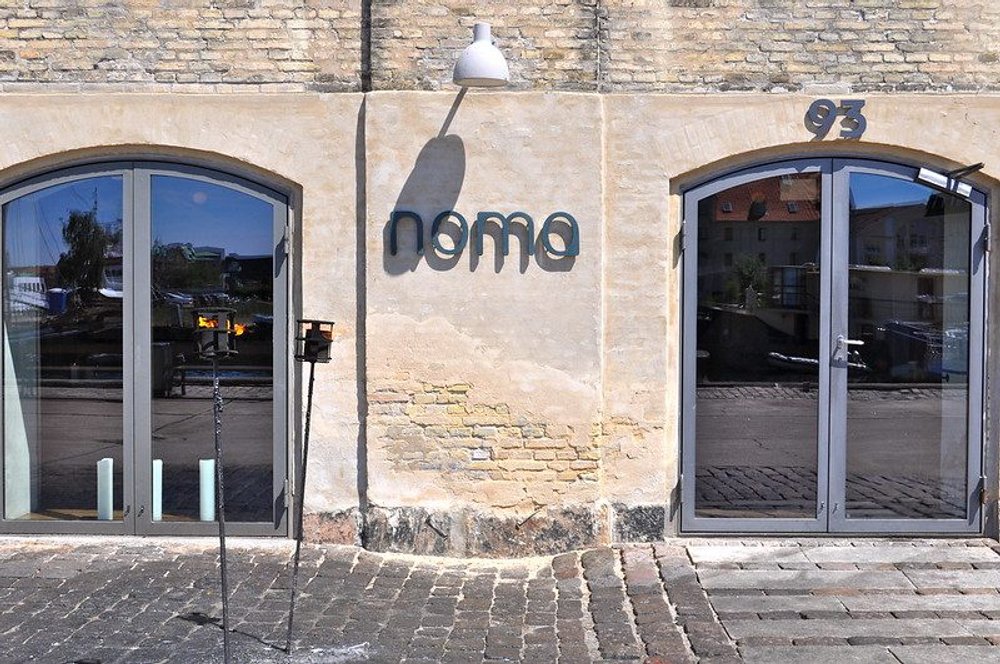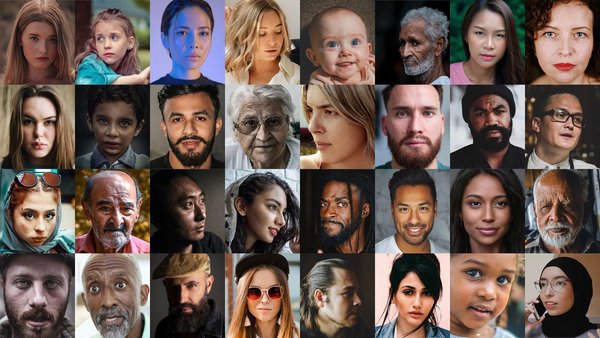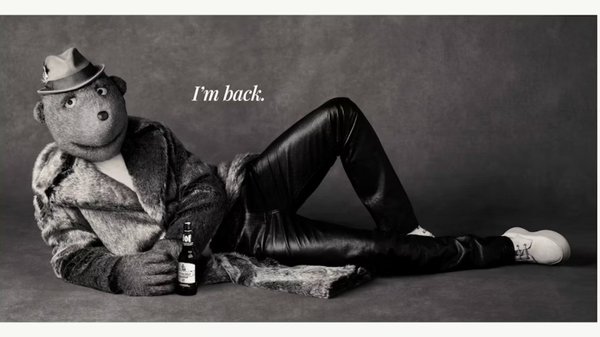Eat The Rich: Revisited /
Tom Beckman, the global chief creative officer at Weber Shandwick looks back on whether 2023 really was the year that society ‘ate the rich’
You can read Beckman’s January article on why ‘eat the rich’ will be the dominant creative narrative of 2023, here.

Photo by Laura Chouette on Unsplash
In the spring of 2001, Marc Jacobs gave birth to the logo era.
The weight, and the eyes, of the world were on the New York wonder child. He had to prove himself as the creative leader of Louis Vuitton. And also prove to the industry that a kid from the streets of the new world could deliver in a traditional fashion house of the old world.
For the Paris Spring/Summer 2001 show, he partnered with underground designer Stephen Sprouse who turned the discreet LV-logo into an oversized graffiti-style pattern on the handbags.
It was never before seen. It was a sensation. It was probably the galvanising moment that transformed the luxury industry from family businesses, carrying family names, to holding companies running brands. All through Marc Jacobs’ rebellion against luxury by bringing high fashion down to street level.
It was the start of the logo era that would define fashion and marketing for over two decades. An era that probably ended in 2023 with the rise of ‘quiet luxury’.
‘Right now, we are living through times that call for that more pared-back approach,’ Lorna Hall, director of fashion intelligence at trend-forecasting firm WGSN concluded in late August of 2023.
She continued, ‘When huge bits of the population are struggling to hang onto or heat their homes, flaunting extreme expressions of wealth looks tone-deaf.’
Tom Beckman, Weber Shandwick
As a backdrop, research agency Revolt launched a study in March 2023 conducted in the US, UK, Brazil and India, covering contemporary fears. The number-one fear on the list was ‘poverty, hunger and homelessness in my own country’, and the biggest climber since last year was ‘income inequality’.
But Lorna Hall was not the first to question extreme expressions of wealth. Nor the most followed.
Six months earlier, Julia Fox, one of the world’s most influential trendsetters, gave a tour of her apartment on TikTok. It became global news, simply because her home looked like the home of most single parents — messy and small.
‘I don’t like excessive displays of wealth … especially people that have really big houses,’ Fox commented.
A few weeks later, Chris Rock — in his stand-up special, Selective Outrage — joked that he is rich but identifies as poor.
Around the same time, celebrities were competing over withholding money from their own kids in an attempt to soften the impact of the nepo-baby discussion.
And it continued throughout the year. In July, Kylie Jenner was accused of cosplaying middle class after shopping at Target in an attempt to score points with the masses. In October, Billie Eilish posted images on Instagram of the mess in her fridge, validating that she was just like the rest of us. This too became global news.
Since the dawn of man, Us Weekly has published a section called ‘Stars – They’re Just Like Us!’. But the section was always based on the notion of paparazzi ‘catching’ celebrities doing normal shit. Now suddenly the celebrities were promoting their own ‘normal’ lives.
It wasn’t a far-fetched conclusion that material success was being devalued. Even for those who had it. And luxury was no longer just a symbol of success — it was also increasingly an unwelcome reminder of a broken system.
Living in a fancy house or wearing expensive items used to improve your ethos, now it risked destroying it. But don’t take my word for it, ask the president of France, Emmanuel Macron, who was accused of removing his luxury watch from his arm mid-interview in March 2023.
The early months of 2023 were also the time when fine dining died.
World-famous Copenhagen restaurant Noma announced that it would close its doors. And Wired magazine welcomed us to ‘the end of fine dining’.
Noma veteran and Michelin-starred Finnish chef Kim Mikkola summarised the problem: ‘Fine dining, like diamonds, ballet and other elite pursuits, often has abuse built into it.’

Image by Studio Sarah Lou
Chef Michel Roux announced that his two-Michelin star London restaurant Le Gavroche would close in January 2024. And the gourmet scene in LA got a one-two punch over the summer with the closing of famous Animal and Taco Maria.
In October, another Michelin-starred chef, Michael Deane, announced that his famous Belfast restaurant Eipic would leave haute cuisine and go affordable.
‘With Brexit, Covid and now the cost-of-living crisis, the world has changed, my team has changed, customers have changed their choices, and I have changed, and, while people are back eating out, there is increasing cost sensitivity which is out of kilter with our fine dining offering at Eipic and we have to respond to that.’
That kind of sums it up, no?
Sir John Glubb’s wisdom from his classic The Fate of Empires served yet again as a warning: ‘During the final decades of their own empires, the Romans, the Ottomans and the Spanish all made celebrities of their chefs.’
When something as essential and functional as food has completed the journey from nature to culture to luxury, maybe we have reached the end of the road? That was certainly the message from the art collective MSCHF when they launched their sand-grain-size Louis Vuitton handbag, only visible with a microscope.
‘As a once-functional object like a handbag becomes smaller and smaller its object status becomes steadily more abstracted until it is purely a brand signifier,’ MSCHF said on Instagram.
The microscopic handbag sold for $63,750. Clearly a contextually relevant piece of pop art, and clearly an insane sum for a piece of microplastic with an LV logo on it. Although a bargain compared to The Millionaire — the Louis Vuitton bag launched the week before in the hands of Pharrell Williams. The price tag — yes, you guessed it — one million US Dollars.
No, quiet luxury alone didn’t end the logo era. Like Caesar, it died by many knife-holding hands. But maybe the Millionaire handbag was the unintentional Brutus?
There are many definitions of creativity. Still, a favourite one is that creativity is always rebellion. It is rebellion against convention. It is about breaking rules, breaking patterns. Shifting power balances.
Marc Jacobs’ 2001 Louis Vuitton handbags were stitched together with this core element of creativity. They were an act of defiance against his own industry, turning tradition, class and luxury on its head. Pharrell Williams’ 2023 Louis Vuitton Millionaire handbag was stitched together with convention — the opposite of creativity.
When LVMH presented its Q1 earnings in mid-April 2023 it became the first European company valued over $500 billion. The same day, LVMH’s lobby in Paris was stormed by a mob of protesters with torches enraged by society’s inequalities. Since then, the LVMH stock price has fallen about 20 percent, or if you count in famous fashion acquisitions — one hundred Yves Saint Laurents.
So, is fashion dying from rebel deficiency? Not necessarily.
We only have to look back at New York Fashion Week in September 2022 to find the remedy. The breakout designer was Telfar Clemens. His mantra? ‘Not for you — for everyone’. His take-over of a Rainbow store on Fulton Street in Downtown Brooklyn was as far away as possible from the excluding and conventional runways of the rest of the fashion week.
Telfar Clemens is doing the exact same thing Marc Jacobs did in 2001. He is rebelling against the fashion industry. This time by reversing luxury’s primary business model — scarcity — by making the price of his bags go DOWN when demand went UP. Top influencers loved it.
Towards the beginning of 2023, the media tried to figure out the reasons behind the new and unexpected phenomenon of ‘de-influencing’. Why did powerful voices suddenly encourage their followers not to buy things? Was it about the recession and hard times? Was it about brands’ lack of authenticity? Or simply a new generation questioning their primary form of marketing, just like previous generations had learned to avoid TV commercials and print ads? Experts are still arguing about it.
Whatever conclusion you reach, one recent manifestation in the Eat The Rich space felt almost cosmically on the nose: Orcas attacking yachts.

Scientists believe the leader is a female orca called White Gladis, and to date more than 500 attacks have been reported and three yachts sunk. One incident took place the night of 4 May 2023 in the Strait of Gibraltar:
‘There were two smaller and one larger orca,’ skipper Werner Schaufelberger told the German publication Yacht. ‘The little ones shook the rudder at the back while the big one repeatedly backed up and rammed the ship with full force from the side.’
The Spanish coast guard rescued the crew and towed the boat to Barbate, but it sank at the port entrance.
The orcas took Eat The Rich quite literally and White Gladis became the unlikely poster-girl of the expression in 2023. The phenomenon had all the components of a carefully curated marketing narrative — the contextual relevance, the drama, the underdog, the bad guy, the clear CTA, and of course, being logo-friendly.
One metric in destination branding is if your city is ‘t-shirt-able’, meaning whether people will wear your city’s name on a t-shirt. Like NYC for example. This metric is not just relevant for tourist movements, but also for intellectual movements. Orcas picking the fight most of us fail to pick against the privileged polluters became an instant t-shirt phenomenon. Today there are hundreds of Orca Eat The Rich shirts to choose from online.
And the call was heard across oceans. Until just recently, the mantra for the young generation in China was ‘996’ — self-realisation through careers working from 9am to 9pm, 6 days a week. Now the mantra is ‘bai lan’ or ‘let it rot’. The term has its origins in basketball, where teams would voluntarily fold in the face of a losing game.
According to Alfred Wu, associate professor at the Lee Kuan Yew School of Public Policy, lack of social mobility is behind the bai lan phenomenon. He attributes it to the ‘burden of the three mountains’: education, healthcare and housing.
Basically, the conventional middle-class dream is no longer possible to achieve for most people. And so people are opting out, regardless of whether they live in America or China or pretty much any place else.
Maybe we should all move to Finland and be with master chef Kim Mikkola? Finns, as you may know, have been crowned the happiest people on earth six years in a row. Among the explanations are limited income inequality and limited expectations.
Micael Dahlén, chaired professor in wellbeing, welfare and happiness at the Stockholm School of Economics recently said in an interview that, ‘Finns have the saying, “It can always get worse”, and although it may not sound too aspirational, there is something liberating and mindful in understanding that regardless your situation, there are always things to be grateful for. That is probably one of the reasons Finland is on top of the World Happiness Report.’
And maybe this recent spike in pared-back expressions is fuelled by a much larger global culture shift? The other year, the European think tank ECFR published The Power Atlas covering recent shifts in political power, military power, technological power and more. The most intriguing chapter of the report was the shift in cultural power over the past few decades. Soft power, measured in the number of films produced per country, is changing rapidly. In the early 1990s, the US produced around 400 films per year. Far more than any other country on earth. By the early 2020s, that number is now around 600 films, while India produces four times as many, China produces twice as many, and Japan and Korea have surpassed the US as well. American cultural influence has shaped generations of marketers and ordinary citizens globally, but that will not be the case for future generations. Rest assured.
The fact that cultural influence is moving from the West to the East is nothing new. For years now, the typical New Yorker has spent their days doing yoga, using BB cream, eating dumplings, listening to K-pop and practising mindfulness. But perhaps the Power Atlas Report indicates that the bigger shift will not just be toward Eastern lifestyle, but an overall showdown with conventional American aspirations. Away from measuring success in fame, logos, and handbags. #Unlearn, as it is called on TikTok.
Now, as always, the job of the creative industries is to look at the seed and see the flower — to be able to see the full potential of an insight or an idea. To turn a spark of genius into a blaze. Just like the creative industries turned the spark from Marc Jacobs’ S/S 2001 show into a 20-year, all-consuming blaze. But now it’s probably time to sunset the logo era that had us running for expressions of wealth.
Our job is to look at the seed planted by Finland, White Gladis and Julia Fox, and see the flower of a new era, a new dream to aspire to. This time an achievable dream.
Designer Telfar Clemens and chef Michael Deane obviously have the ability to see that flower — making their craftsmanship and their expressions available to the many instead of to the few. And I’m confident that they will be rewarded with both love and a future-proof business. I’m looking forward to seeing the brands of the world following their lead. After all, we marketers pride ourselves on being the interpreters of popular culture.
One unexpected early adopter is perhaps Goop, historically associated with unattainable wellness. In October, Gwyneth Paltrow launched the affordable skincare brand Good.clean.goop, sold at Kylie Jenner’s favourite store, Target.
Oh, by the way, Cannes Lions is introducing a new category for the next festival — Luxury. What a great opportunity for our industry to show that we can read the room, and to provide guidance for the luxury industry on how to future-proof the business.
Want more of the same? /
We don’t just write about best-in-class campaigns, interviews and trends. Our Members also receive access to briefings, online training, webinars, live events and much more.







